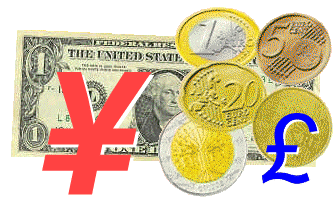
5 Things to Know About China’s Currency Devaluation
10 AUG 2015 11:57PMBY CARLOS TEJADA
http://blogs.wsj.com/
China on Tuesday devalued its currency in a way that left it 1.9% weaker versus the U.S. dollar. The move will likely have a ripple effect through financial markets as well as in politics, as China is the world’s largest trader and the yuan is increasingly used overseas. Here are five things you need to know about Beijing’s latest move.

1 What did China do?
China tightly controls the value of its currency by setting a daily rate for the yuan versus the dollar. In China’s domestic market, traders are allowed to push the yuan 2% stronger or weaker for the day. But the People’s Bank of China often ignores those market signals when it sets the next day’s rate, sometimes setting the yuan stronger versus the dollar when the market is signaling it sees the yuan as weaker. The central bank said it will now take the previous day’s trading into account – and it attributes that move to Tuesday’s sharp drop.
2 Why did China do it?
In its statement, the PBOC said it wants to bring the yuan more in line with the market. But the move also comes as China’s important export sector has weakened – and overall economic growth looks sluggish. Over the weekend, Chinese customs officials said July exports fell 8.3% compared with a year ago. A weaker currency helps China’s exporters sell their goods abroad.
3 What does this mean for the rest of the world?
The most immediate effect is that it signals to the world that Beijing thinks the Chinese economy is sputtering. The move suggests China is looking for ways to get it going again. But it also has major implications for the U.S. and other countries that trade with China because it puts their companies at a disadvantage. In the U.S., it will likely reignite criticism that Beijing keeps the currency artificially low to help its own manufacturers – a charge that could get added impetus during the presidential election campaign.
4 What does this mean for markets?
The move puts pressure on other central banks around the world to push down their own currencies to help their own exporters and to prevent destabilizing capital flows. The move could hurt commodities markets because it signals potential weak demand from China. It could also accelerate capital outflows out of China, especially if investors expect further devaluations.
5 What’s next?
The move could add to tensions ahead of Chinese President Xi Jinping’s visit to the U.S. and his meetings with President Barack Obama, which is set for late September. It could also complicate China’s efforts to get the yuan added to a basket of currencies tracked by the International Monetary Fund – efforts aimed at giving the yuan greater acceptance abroad. Longer-term, the move raises questions about Beijing’s pledge to liberalize its economy. On one hand, making the yuan more market-driven is a step in that direction. But the move also appears to be designed to help exporters, at a time when China has been looking for other, more dependable sources of growth.

No comments:
Post a Comment